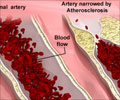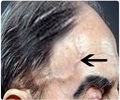
Coronary artery disease is a narrowing of the small blood vessels that supply blood and oxygen to the heart.
Tapan Chatterjee, PhD, and researchers in the division of cardiovascular diseases at UC found through global gene expression analysis (measurement of the activity of thousands of genes at once) that this outer fat tissue-known as perivascular fat tissue-is different from subcutaneous (beneath the skin) fat tissues in other parts of the body.
Research has previously shown that perivascular fat tissue in humans with coronary artery diseases is highly inflamed, leading to the belief that dysfunctional perivascular fat is the real culprit in the formation of coronary artery diseases.
Chatterjee's team was able to replicate this inflammation in animal models.
"The proximity of the perivascular fat to the artery easily influences the function of the coronary blood vessel wall," Chatterjee said.
Advertisement
"Our next steps will be to identify various secreted factors, or signals, from perivascular fat tissue of obese mice that could negatively influence the functions of the blood vessel wall.
Advertisement
The findings has been presented at the American Heart Association's Arteriosclerosis, Thrombosis and Vascular Biology (ATVB) 2012 Scientific Sessions in Chicago April 20, 2012.
Source-ANI














